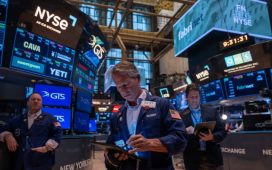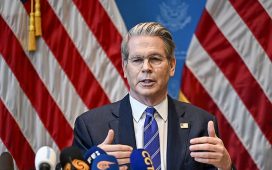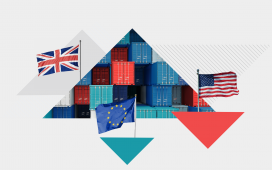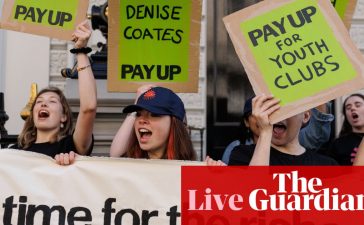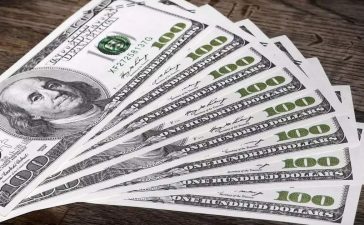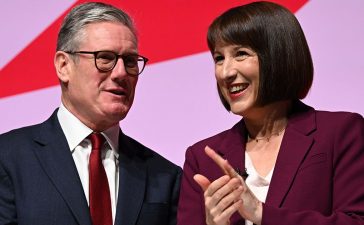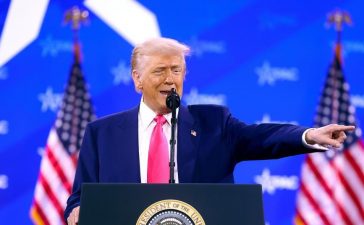Tariffs unveiled against dozens of countries by President Donald Trump Wednesday sent global stock markets reeling as the worse-than-expected levies are seen damaging US and global economic growth even as they push inflation higher.
Stock markets delivered a harsh verdict on Trump’s announcement, which included a 20% tariff on EU goods and more aggressive tariffs on Asian countries. Stocks fell sharply, with the Morningstar US Market Index opening 2.82% lower. Losses quickly accelerated to 3.47% in early trading.
The damage was spread across every sector of the Morningstar Style Box: small-cap growth stocks posted the most dramatic losses of 4.30% while large-cap value stocks lost 1.66%.
The S&P 500 Index fell 3.29% on Thursday morning, while the tech-heavy Nasdaq plunged 4.41%. Stocks with exposure to Southeast Asia such as Apple AAPL, Nike NKE, and Amazon AMZN lost, along with tech stocks like Nvidia NVDA.
UK Bank Stocks Under Pressure
In the UK, the FTSE 100 fell by around 1.5%, led by Asia-focused banks Standard Chartered STAN and HSBC HSBA. FTSE 250 stock Burberry BRBY, whose supply chain is exposed to south-east Asia, fell around 7%.
Defensive names like BAE Systems BA bucked the trend. But the stock market’s fall was less pronounced than in the rest of the world as the UK escaped the worst of the new tariff regime, with only a 10% levy imposed. The UK’s defensive bias also helped, commentators said.
European stocks were lower on Thursday, with luxury and banking stocks, especially those exposed to Asian markets, falling the most.
In currency and commodity markets, the US dollar fell against a basket of currencies, while gold pushed to new record highs just below $3,200.
Government bond markets also reacted, with prices rising and yields falling as investors sought out safe havens.
Will the US Fall Into Recession?
Across Wall Street economists pronounced the tariff outcome as worse than expected. At the same time, rather that removing uncertainty, as some pundits had predicted, the sweeping tariff regime adds an entirely new level of short- and long-term unknowns to the global economic outlook.
In the immediate future, however, the impact is seen as broadly negative.
“Recession risk over the next year has climbed to at least one third,” says Preston Caldwell, Morningstar’s senior US economist. “We’ll be reducing our GDP growth forecast for 2025 and 2026 by around 0.5% each.”
Caldwell emphasizes that the scope of the tariff increases makes it difficult to assess just how deep the damage will be. “This kind of regime shift is so unprecedented the historical data and models derived therefrom are only a best guess,” Caldwell says. “Altogether, the announced hikes today – including autos and other previously announced ones – will take the average US tariff rate somewhere north of 20%, the highest in over a century.”
“The bigger factor is the uncertainty weighing on spending over a 1-year time horizon. Perhaps longer. Are firms really going to invest in US manufacturing with the possibility that midterms or 2028 election could bring a reversal in tariffs? If Congress had enacted these tariffs it would give it a bit more staying power and credibility. But this is really a worst of every world scenario.”
Dominic Pappalardo, chief multi-asset strategist at Morningstar Investment Management, says the impact of tariffs on the economy could push the Federal Reserve toward looser monetary policy. “The announcement … may be enough to allow the Fed to shift their focus more toward economic weakness than inflation,” he says. “If that’s the case, the Fed may decide to resume interest rate cuts sooner than previously expected.”
However, even that isn’t a clean call as tariffs could contribute to renewed inflation pressures. “The Fed has been trapped between supporting economic activity and fighting inflation and unfortunately today’s news puts additional pressure on both,” he says.
The author or authors do not own shares in any securities mentioned in this article. Find out about Morningstar’s editorial policies.


